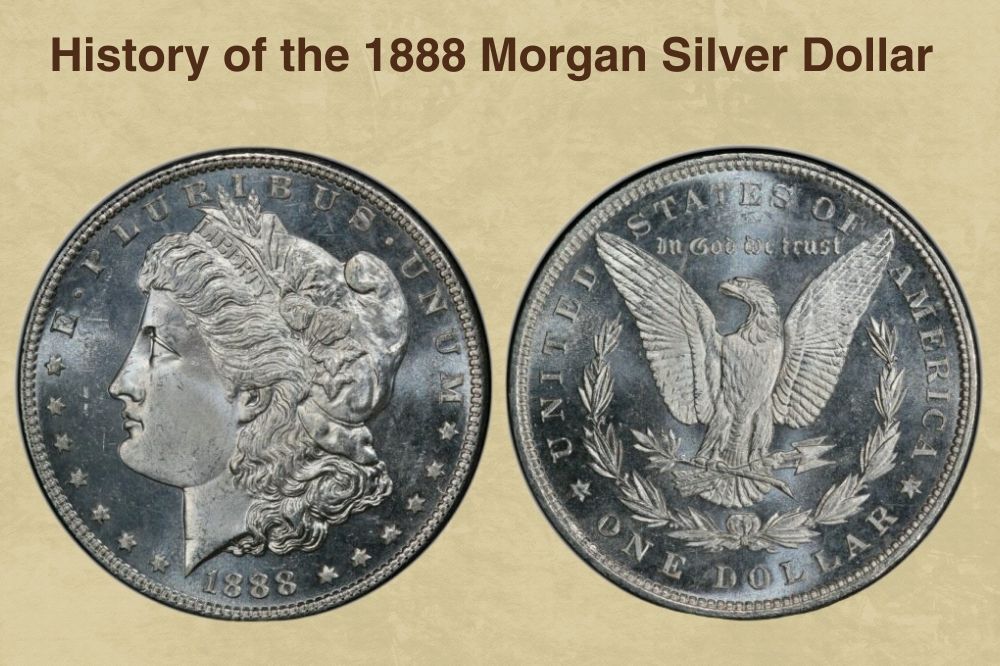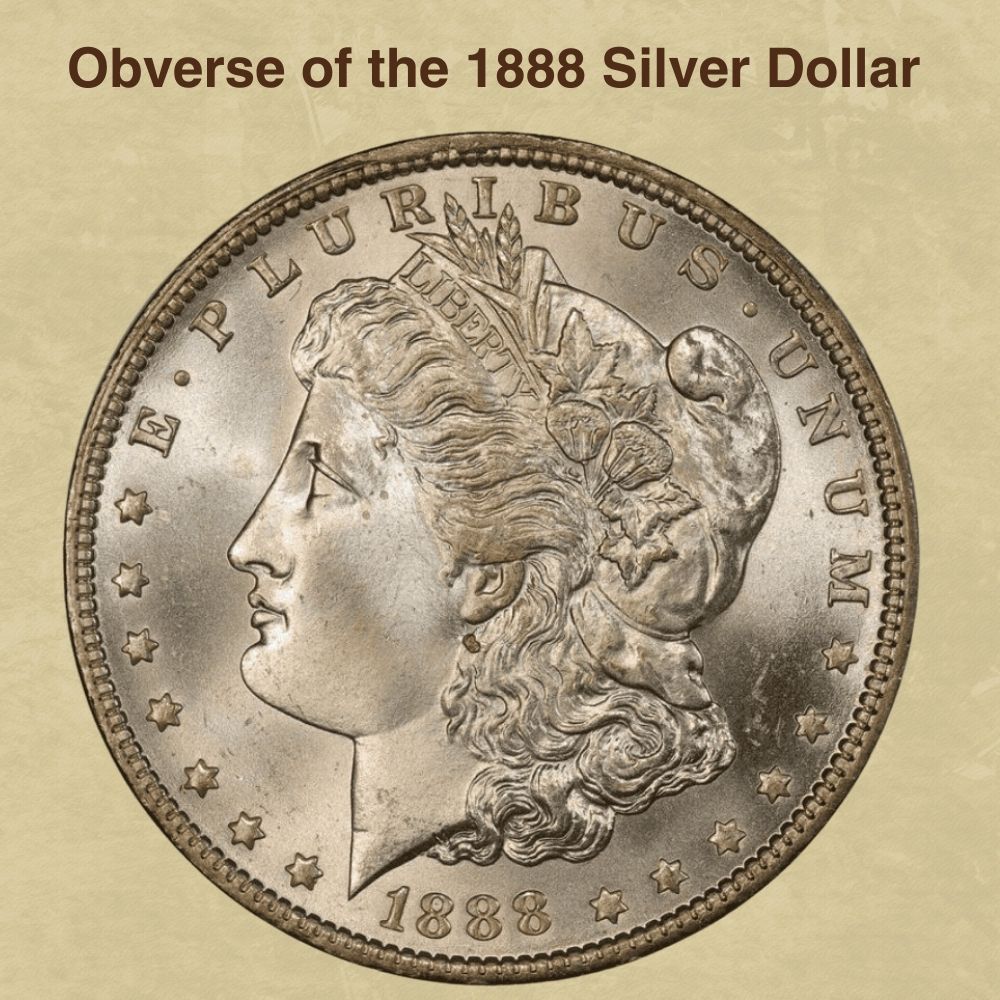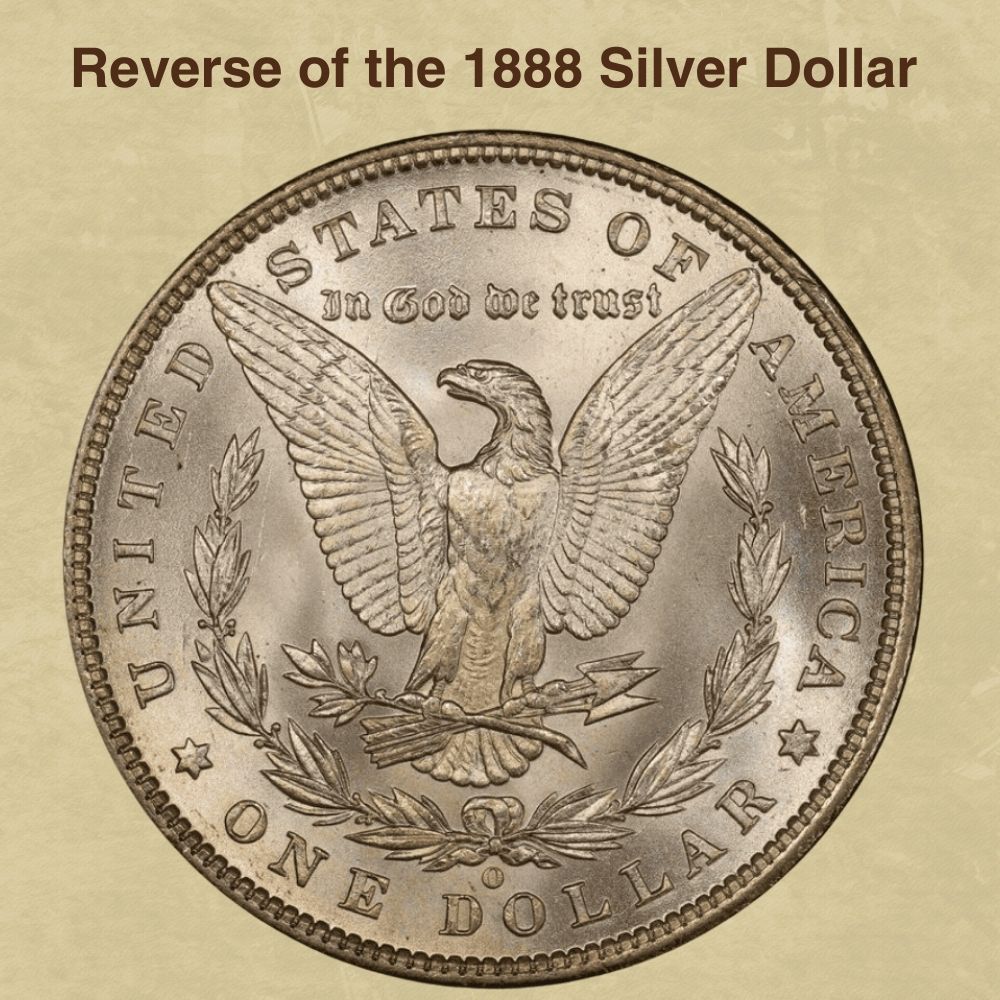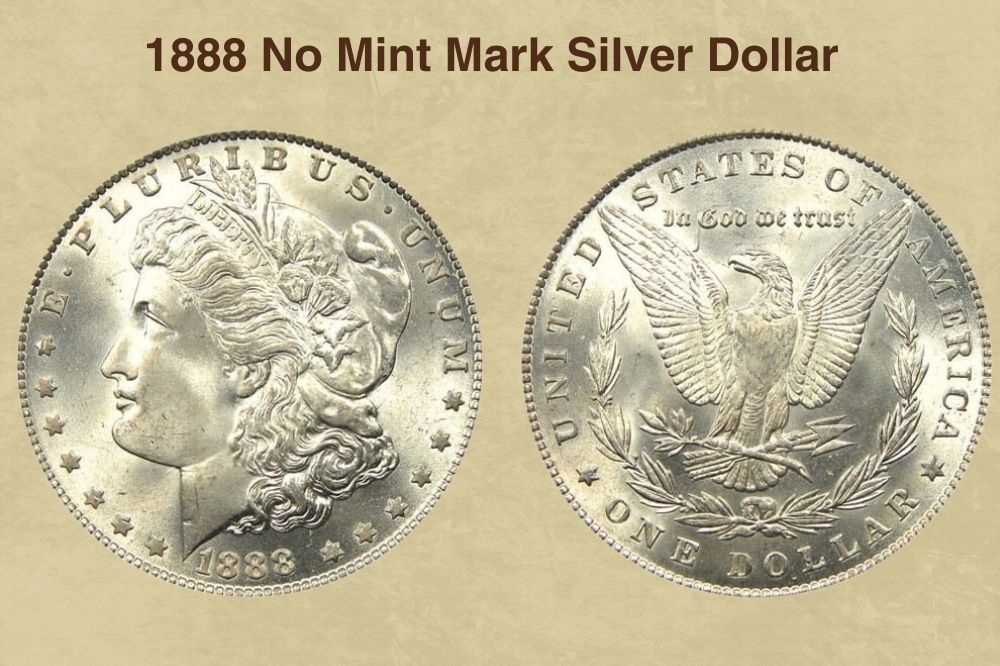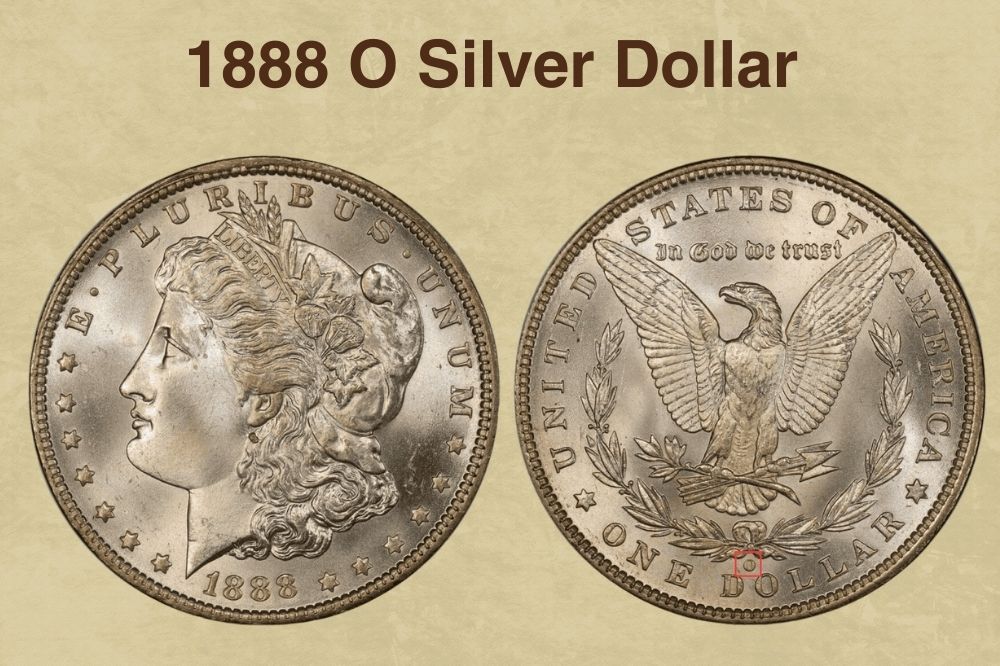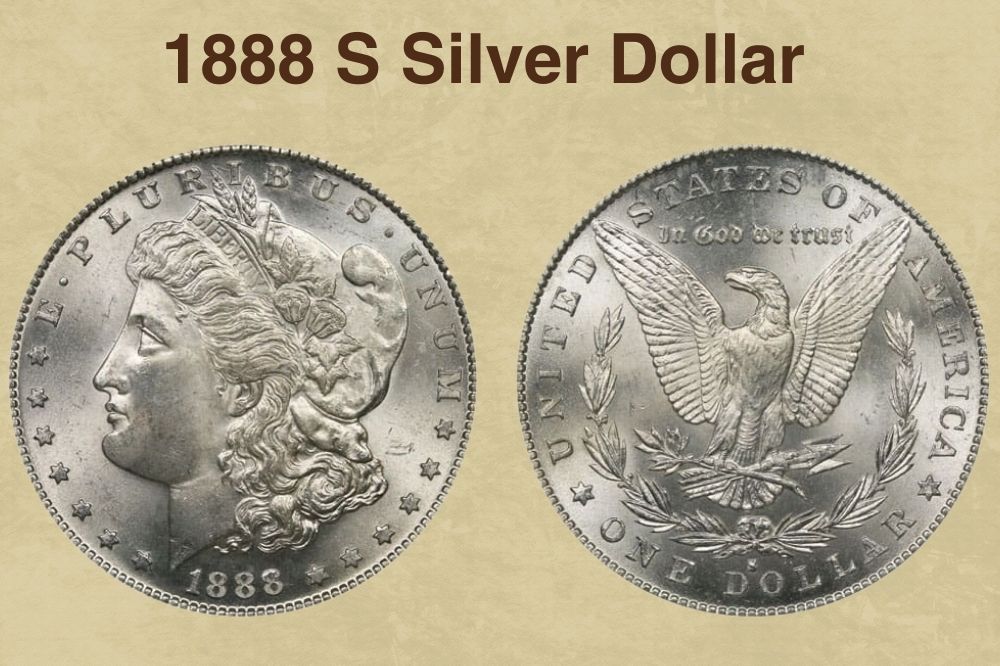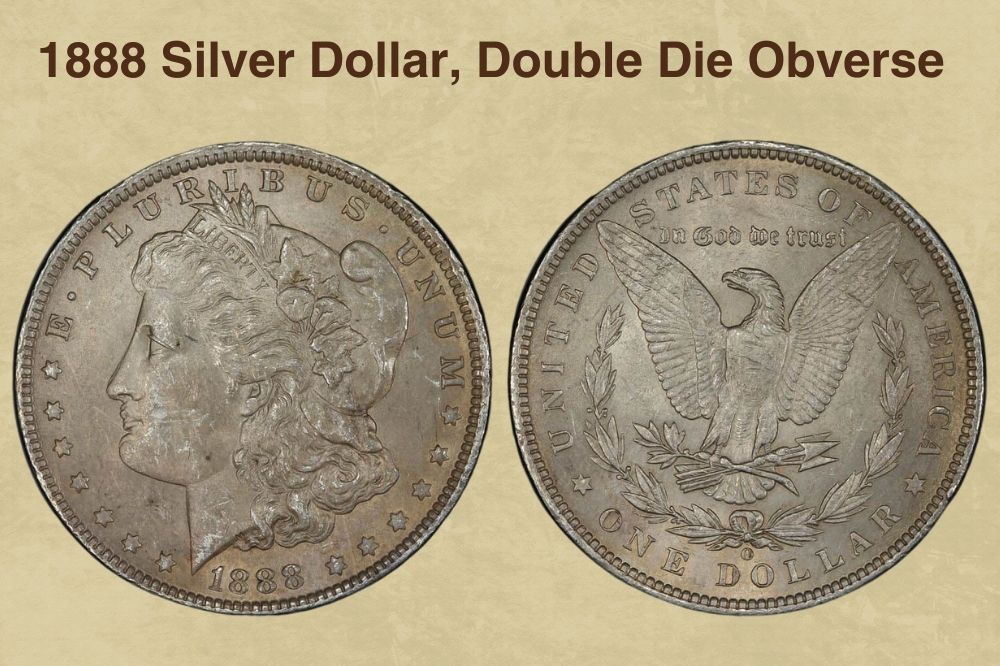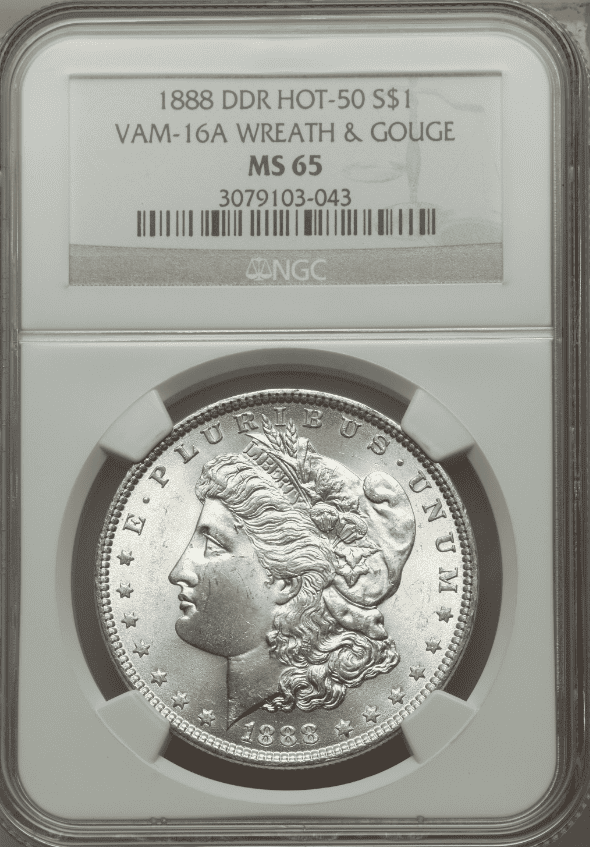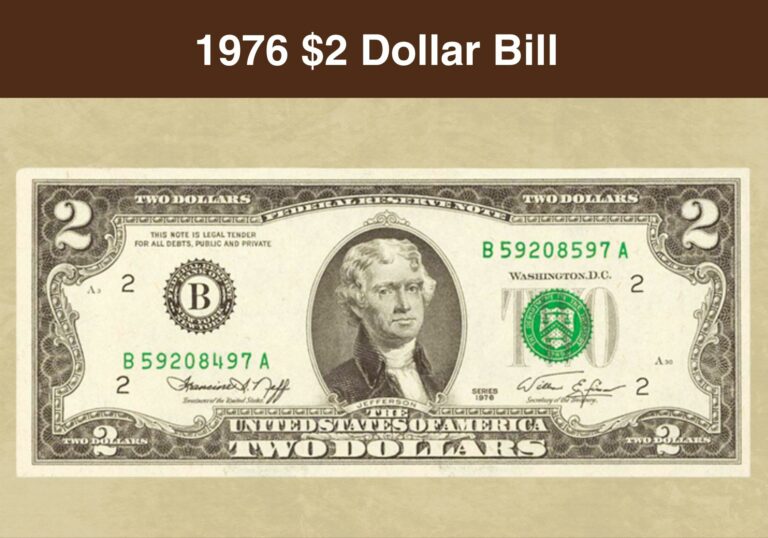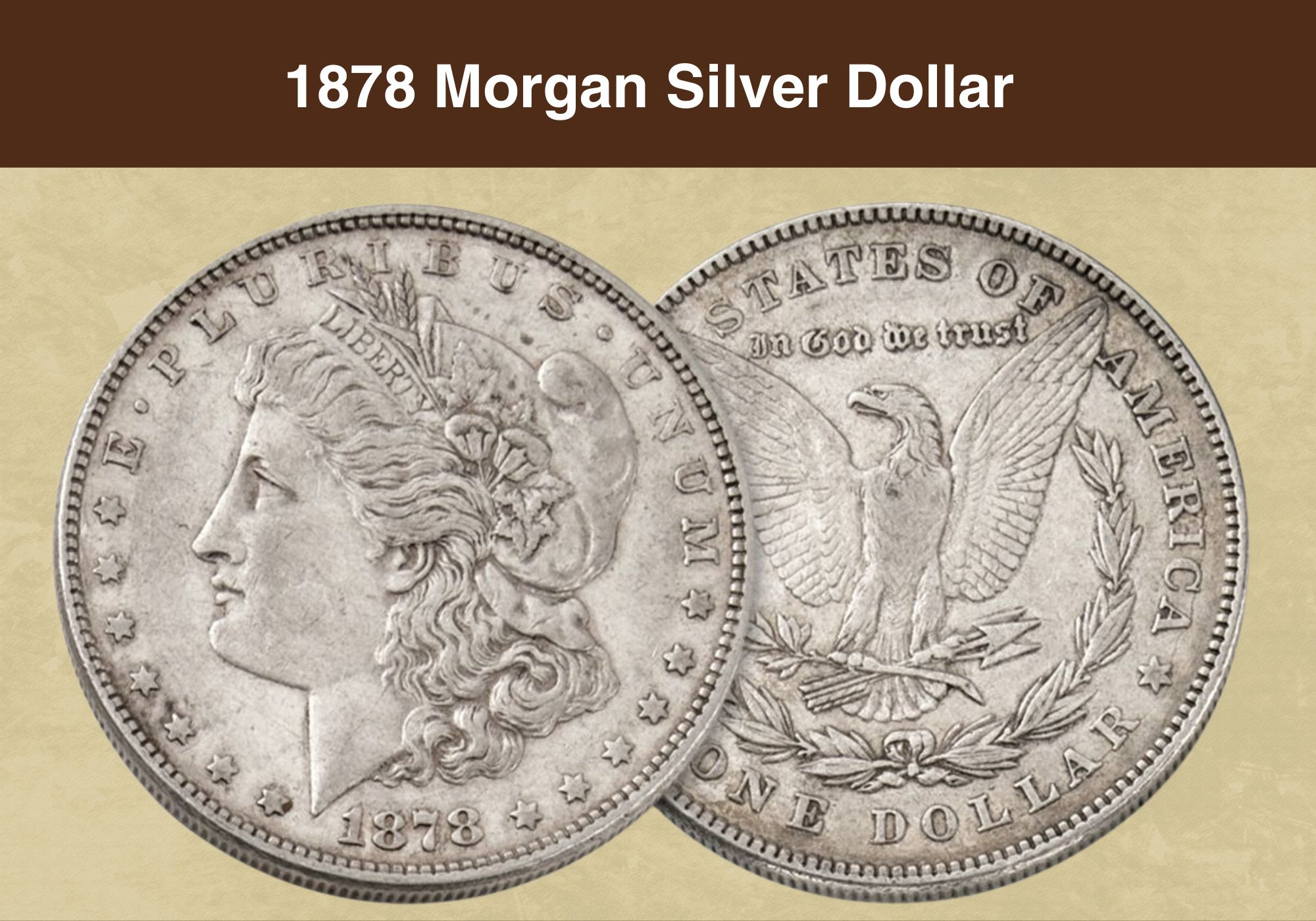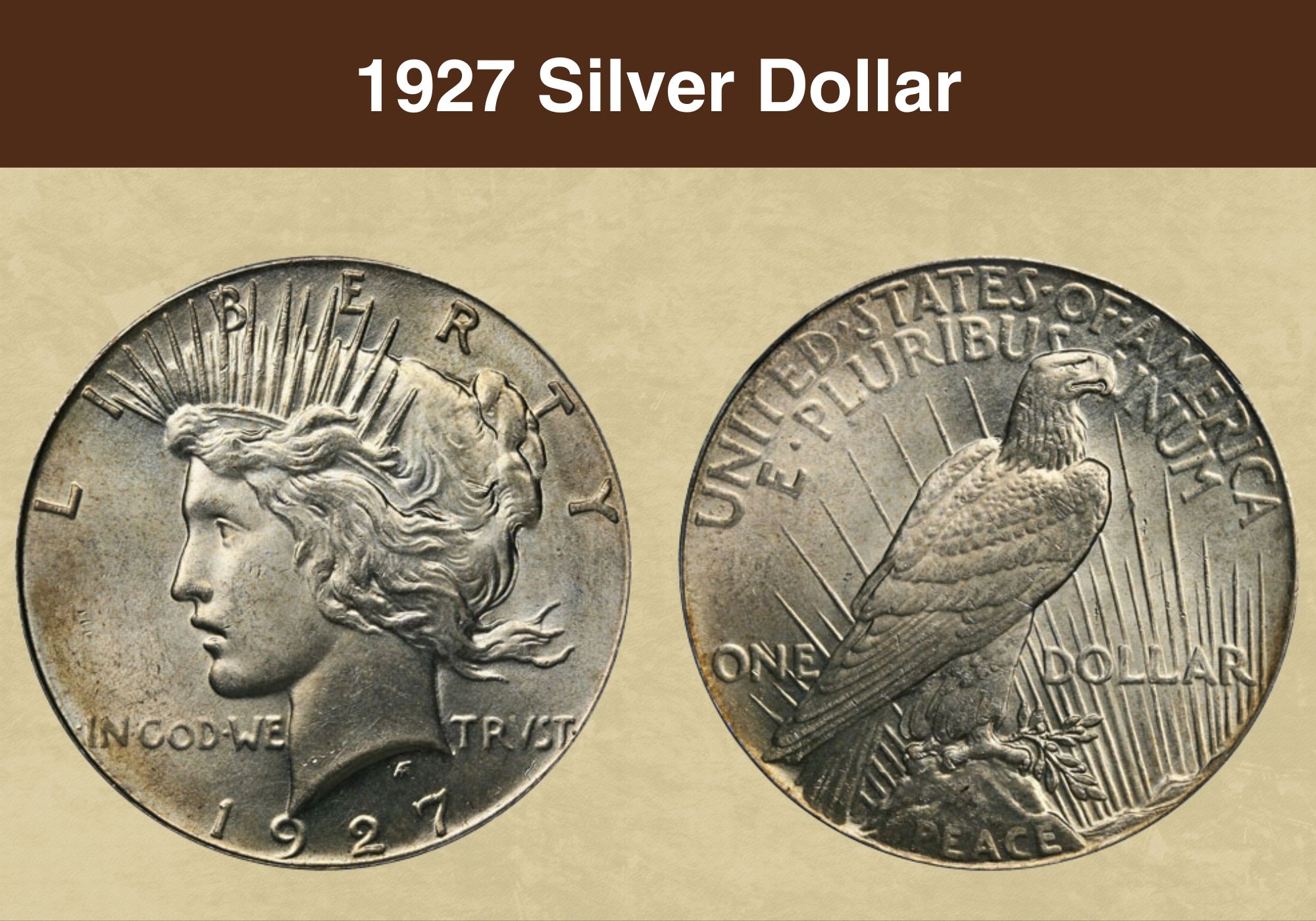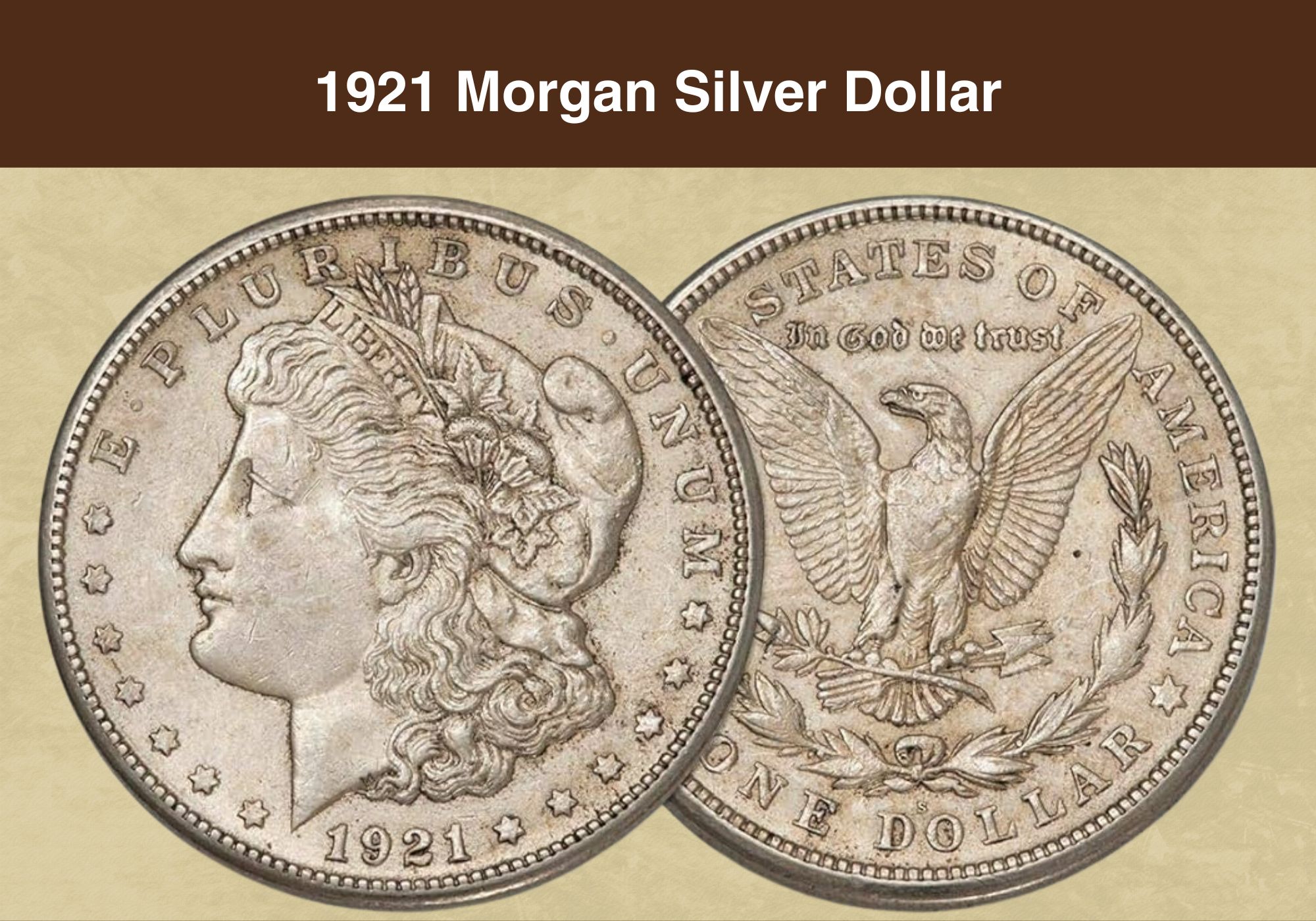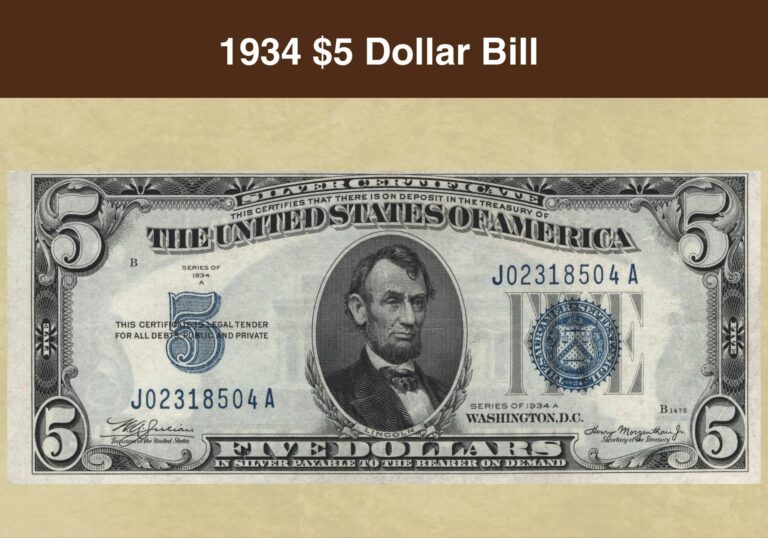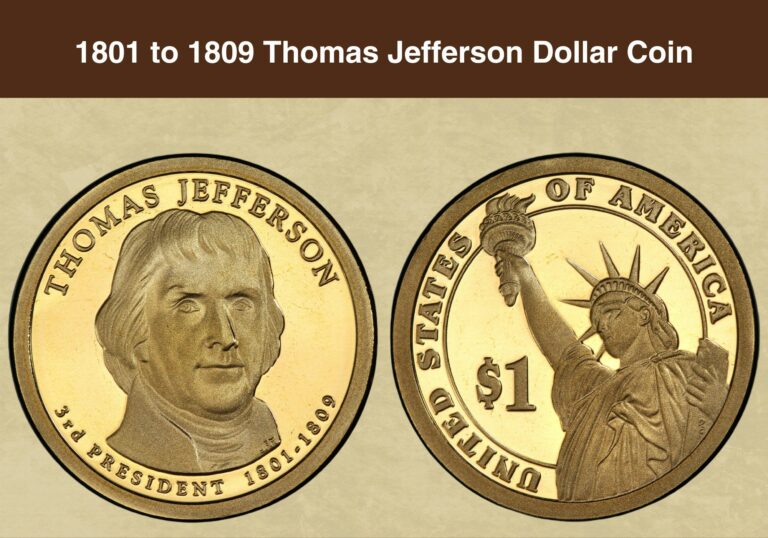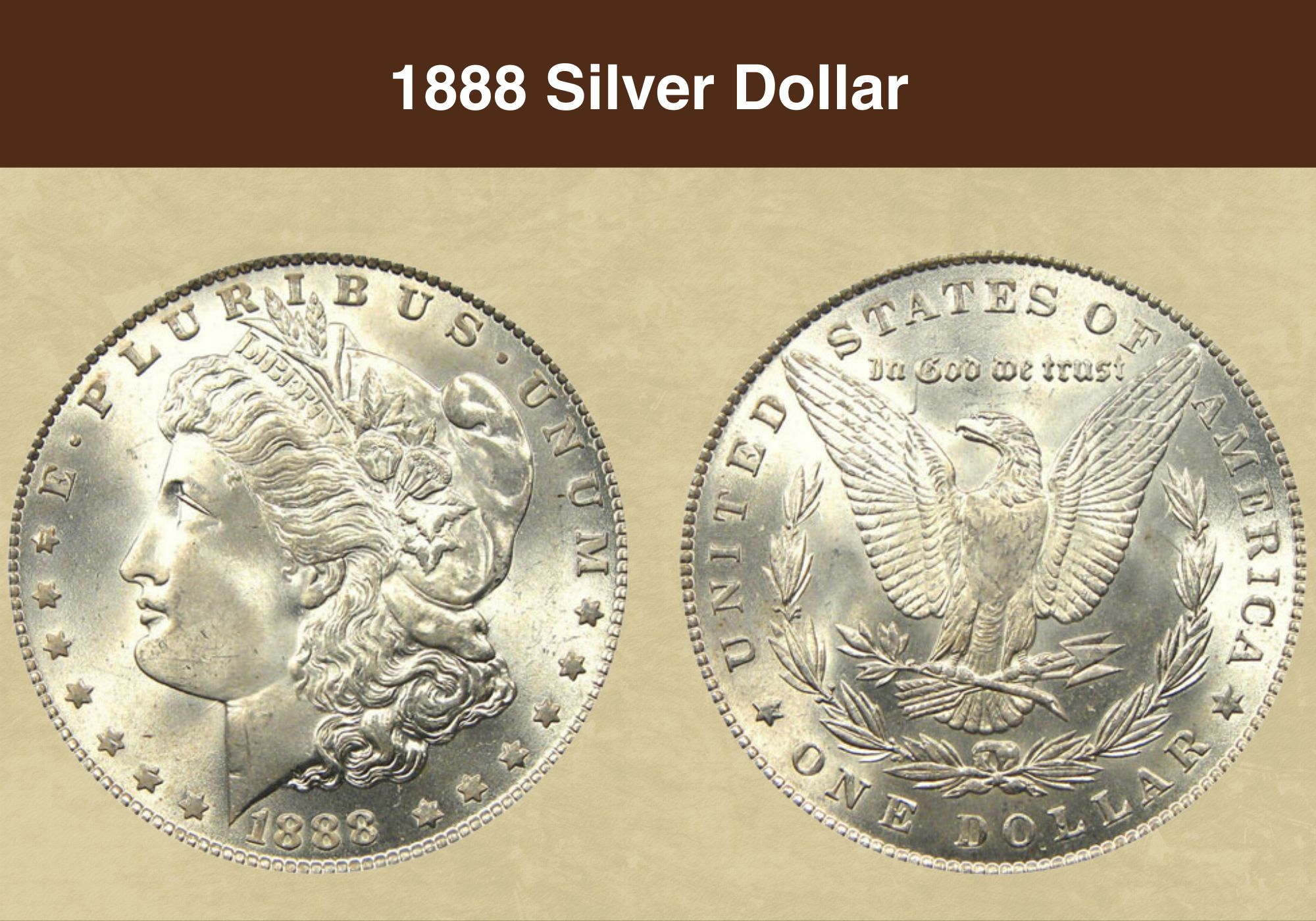
Coin Value Contents Table
- 1888 Silver Dollar Value Chart
- History of the 1888 Morgan Silver Dollar
- Features of the 1888 Morgan Silver Dollar
- 1888 Silver Dollar Grading
- 1888 Silver Dollar Value Guides
- 1888 No Mint Mark Silver Dollar Value
- 1888 O Silver Dollar Value
- 1888 S Silver Dollar Value
- Rare 1888 Silver Dollar Error List
- Where to Sell Your 1888 silver Dollar ?
- FAQs
If you have a silver dollar from the nineteenth century, you’re probably wondering how much it’s worth. Well, buckle up, because you’ve come to the right place to find out!
We’re going to look at everything you need to know about the 1888 silver dollar value. We’ll investigate how much difference condition makes to what collectors are willing to pay. And we’ll explore the design and history of this beautiful coin, known as the Morgan dollar, as we go.
So if we’ve whet your appetite, let’s get started!
1888 Silver Dollar Value Chart |
||||
| Mint mark | XF45 | MS60 | MS65 | MS67 |
| 1888 (P) No Mint Mark Silver Dollar Value | $48 | $75
Prooflike: $100 Deep Mirror Prooflike: $180 |
$300
Prooflike: $575 Deep Mirror Prooflike: $2,600 |
$6,500
Deep Mirror Prooflike: $22,500 |
| 1888 O Silver Dollar Value | $48 | $90
Prooflike: $125 Deep Mirror Prooflike: $190 |
$375
Prooflike: $850 Deep Mirror Prooflike: $3,250 |
$17,500 |
| 1888 S Silver Dollar Value | $235 | $460
Prooflike: $475 Deep Mirror Prooflike: $550 |
$2,500
Prooflike: $3,650 Deep Mirror Prooflike: $16,000 |
$50,000 |
History of the 1888 Morgan Silver Dollar
The dollar coins produced in 1888 were the tenth mintage in the series known as Morgan dollars. Their nickname comes from the man who designed them, George T. Morgan.
The coins were first created as a result of campaigning by the mining industry. The powerful mine owners wanted a secure market for their wares. They lobbied for the Mint to be required to buy any silver that was presented to it at a set price.
The industrialists didn’t quite get what they want – but they came close. The Bland-Allison Act was passed in 1878 and obliged the Mint to buy a set quantity of silver every month. The silver was to have a value of between $2 million and $4 million, and all of it had to be converted into coins.
The result of this was the production of huge numbers of Morgan dollars every year. And they continued to be minted annually until 1904.
By 1918, there were vast quantities in circulation. But numbers today aren’t as high as you might expect.
That’s because 1918 saw the passage of the Pittman Act. It authorized the melting down of silver coins, a measure intended to provide financial relief to the British government. Coin historians believe that around 90 per cent of all silver coins were melted down as a result of the Act.
No Morgan dollars were produced between 1904 and 1920. In 1921, they were resurrected for a single year. And 100 years later, they were issued again as collectors’ items.
Also read: 12 Most Valuable One-Dollar Coin Worth Money
Features of the 1888 Morgan Silver Dollar
Obverse of the 1888 Silver Dollar
Morgan’s design for the obverse of the 1888 silver dollar features a familiar face – Lady Liberty. She is shown in profile facing left, as the coin is viewed.
But unlike depictions of Liberty on earlier coins, Morgan eschewed Grecian features. Instead, his Liberty was based on a real American woman, a philosopher and teacher name Anna Willess Williams.
Morgan was introduced to Anna by a friend of his, another artist by the name of Thomas Eakins. He pronounced her perfect for the project, and she sat for him five times.
Anna had agreed to act as the model for Liberty on condition of anonymity – but somehow her name leaked out. Her sudden fame led to all kinds of problems – including the loss of her job and the rumored break-up of an engagement.
Above her image, the words “E PLURIBUS UNUM” curve parallel to the upper coin edge. The Latin motto means “From the many, one” and is a reference to the creation of the USA from the individual states. Stars representing those states circle the edge, and the date is at the bottom.
Reverse of the 1888 Silver Dollar
The reverse design is also by Morgan. It shows an eagle, traditional emblem of the USA, with outstretched wings. It grips a bundle of arrows in one set of talons, and a sprig of olive in the other.
Immediately above the eagle’s head, the words “In God We Trust” are inscribed in gothic script. The country name curves around the top two thirds of the coin. At the bottom, separated by a star on either side, is the denomination.
The whole design is bordered by a ring of beads. If the dollar was struck in New Orleans or San Francisco, it will also have a mint mark on this side. Look for a small “O” or “S” above the “D” and “O” of “DOLLAR”.
Other Features of the 1888 Silver Dollar
The 1888 silver dollar is in fact made of 90 per cent silver and 10 per cent copper. It measures 38.1 millimeters in diameter and weighs 26.73 grams.
Turn it on its edge, and you’ll see a series of parallel grooves. These are known as “reeds” and they’re intended to prevent fraud. Their presence means it’s possible to tell at once whether any precious metal has been clipped from the edge of the coin.
This YouTube video from CoinStudy shows the Morgan dollar in detail and gives advice on how to grade your coin.
Also read: 14 Most Valuable Coins In Circulation
1888 Silver Dollar Grading
| # | Grade |
|---|---|
| 1 | Basal State-1 |
| 2 | Fair |
| 3 | Very Fair |
| 4, 5, 6 | Good |
| 7, 8, 10 | Very Good |
| 12, 15 | Fine |
| 20, 30 | Very Fine |
| 40 | Extremely Fine |
| 50 | About Uncirculated |
| 60 | Mint State |
| 65 | Mint State |
| 70 | Mint State |
Please check our grading guides to know your coin scale, It’s the necessary step to know the exact value of your coin.
Check out now: How to Grade Morgan Silver Dollar?
1888 Silver Dollar Value Guides
1888 No Mint Mark Silver Dollar Value
The silver content of the Morgan dollar means that these coins will always have an intrinsic worth. But even in poorer condition, they’re worth more than their scrap value to collectors.
You can tell if you have a Philadelphia Morgan dollar by looking at the reverse. If there isn’t a small letter above and between the “D” and “O” of the denomination, it’s a Philadelphia coin.
Just over 19 million of these were made in 1888. Generally speaking, the better the condition of the coin, the more it will be worth. But there’s a premium for coins graded 1 and 2. The PCGS, a coin grading agency, values those at $65 and $45 respectively.
If your dollar is in slightly better condition, graded between 3 and 20, it will be worth between $34 and $42. An extremely fine example, graded XF45, is valued at $48. And you can get an “about uncirculated” example for around $50.
If you want an uncirculated coin, you’ll need to spend a little more. At MS60, the lowest grade for mint state, an 1888 Philadelphia silver dollar is worth around $75. Values rise gradually to $190 at MS64+ and accelerate from there.
A gem quality MS65 coin is worth $300, while the value for a point higher more than doubles to $700.
The highest grade awarded to any coin by the PCGS is MS67+. The agency has graded five coins at that level, and values them at $17,500 apiece.
Another coin grader, the NGC, has awarded a grading of MS68 to three coins. The last time one of those was sold at auction was in 2017. At the time, it achieved a price of $15,275.
All these values are for standard mint state coins. But some have particularly clear strikes and have been designated “prooflike” or “deep mirror prooflike”. Either designation can add a significant premium to value.
A prooflike 1888 Philadelphia dollar graded MS60 is worth around $100. And the finest, graded MS66+, is worth around $4,250.
Deep mirror prooflikes, also known as DIMPL (pronounced “dimple”) coins, start at $180 for an MS60 dollar. And the best example to have been unearthed so far, graded MS67, is valued at a staggering $22,500.
1888 O Silver Dollar Value
The New Orleans Mint facility produced fewer silver dollars than Philadelphia in 1888. They can be identified by the small “O” just above the denomination. And while just over 12 million came out of the coin presses, it’s estimated that only around a million survive today.
The majority of those are in circulated condition. Their values range from around $32 to $48 dollars in grades up to XF45. Coins graded 2 have a slight premium over those graded 1 and 3 – they’re worth around $32.
In uncirculated condition, values start at just south of three figures and rise gradually to MS63+ ($150). At MS64, the value jumps to $175, while a gem MS65 coin is worth around $375.
Coins in the finest condition command high prices. The PCGS has graded less than 400 at MS66, and values those at $1,650 each. The 60 coins graded a point higher are each worth around $4,500. And the very finest, graded MS67, is valued at $17,500.
There are prooflike and deep mirror prooflike coins among New Orleans dollars too. The former start at $125 at MS60, and top out at $9,000 at MS66+. For the latter, you’ll be looking at a minimum of $190 at MS60, rising to $32,500 for the sole example graded M66+ by the PCGS.
1888 S Silver Dollar Value
The San Francisco mint facility produced far fewer 1888 silver dollars than the other two facilities. 657,000 coins were struck, and fewer than one in ten of those are believed to survive today.
It’s not surprising, then, that even in poorer condition, a silver dollar with an “S” mint mark can make good money.
This is another case where coins graded 1 and 2 are a little more valuable than those in slightly better condition. An 1888-S silver dollar at the lowest grade is valued at $100 by the PCGS and $90 for a grade 2.
The cheapest grade is 3, with a coin at that level valued at $90. For anything else, values are at least three figures. An extremely fine XF45 coin is worth around $235, while a mint state MS60 is worth around $460.
The finest mint state coins to have been graded by the PCGS are three examples graded MS67. They’re valued at $50,500 apiece.
Prooflike examples range in value from $475 at MS60 to $35,000 at MS66+. The most economical deep mirror prooflike dollars are graded MS60 and are worth around $550. And the finest certified to date is graded MS66, and is worth $22,500.
Also read: Top 10 Most Valuable Morgan Silver Dollar Worth Money
Rare 1888 Silver Dollar Error List
1888 Silver Dollar, Double Die Obverse
Double die errors occur because of a problem during the manufacture of the die used to strike coins. The die has to be struck more than once to capture every detail of the design. And if there’s any movement between those strikes, a double image results.
Some of the silver dollars struck in 1888 show evidence of this kind of error on the obverse. And just as with non-error coins, condition is key to value.
An example graded 1 is worth $160, while values drop to $75 at 2 and climb gradually from there. An extremely fine XF45 coin is worth just over $400.
But mint state examples are very rare and valuable. A standard MS60 double die obverse is valued by the PCGS at $12,000. Five have been certified at MS61 and are valued at $17,000 apiece, while one has been certified MS63 and is worth $18,500.
No prooflike coins, and only one deep mirror prooflike coin, has been found with this error. The DIMPL is graded MS60, and last sold at auction back in 2008. The price then was $25,300.
1888 (P) No Mint Mark, Double Die Reverse, VAM7
The silver dollars struck in Philadelphia in 1888 include a number of different double die errors on both sides. These are given what’s known as VAM numbers to identify them.
One variety, coded VAM7, has doubling on the reverse of the coin. It’s very difficult to spot, even with a microscope, but appears on the wreath of leaves towards the bottom of the coin. It can also be identified by a series of die gouges just below the motto “In God We Trust”.
Again, condition is key to value. A coin with this error graded AU55 will be worth around $65. That rises to $135 at MS63, and to $400 at MS65.
This YouTube video from Treasure Town takes you through a wide range of errors and varieties in 1888 silver dollars.
Where to Sell Your 1888 silver Dollar ?
Now that you know the value of your coins, do you know where to sell those coins online easily? Don’t worry, I’ve compiled a list of these sites, including their introduction, pros, and cons.
Check out now: Best Places To Sell Coins Online (Pros & Cons)
FAQs
How much is an 1888 silver dollar worth today?
The value will depend on a range of different factors. The most important of those are the mint mark and the condition of the coin. But if there’s an interesting Mint error, even a coin in poor condition can be very valuable.
All other things being equal, 1888 silver dollars with the San Francisco mint mark are most valuable. Look for a small “S” on the back, above the “D” and “O” of “DOLLAR”. These are worth a minimum of around $100, while the finest are worth thousands.
What is the error on the 1888 silver dollar?
There are a large number of different varieties of 1888 silver dollars. Many of these are caused by errors during the manufacture of either the obverse or reverse die. Look for evidence of doubling on parts of the text or image.
One of the most valuable errors is the double die obverse on the 1888 New Orleans silver dollar. Values for that start at $75 for a coin graded 2, with the finest examples selling for around $20,000.

